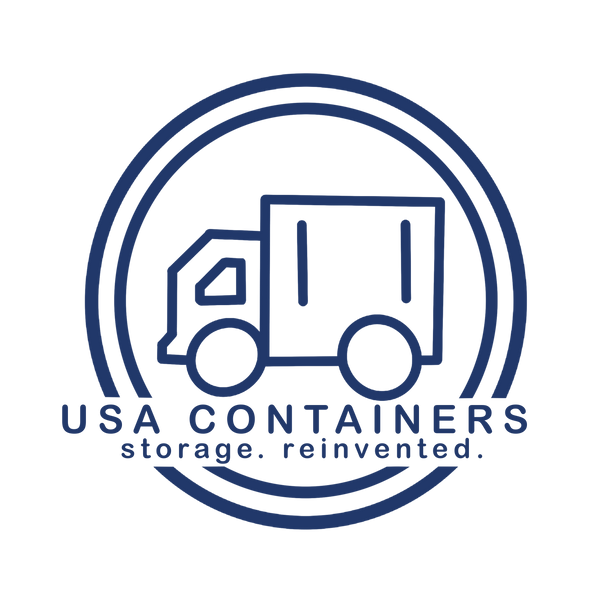
Where Can I Buy Railroad Ties to Put Under My Shipping Container?
Share
If you’re placing a shipping container on your property, one of the smartest things you can do is elevate it off the ground. Whether you're setting it up for storage, a workshop, or even a living space, proper airflow and drainage can make all the difference. That’s where railroad ties come in.
These heavy-duty wooden beams are tough, long-lasting, and widely available—making them a popular choice for creating a stable base under shipping containers. But where do you actually get them?
Why Use Railroad Ties Under a Shipping Container?
Before we get into where to buy them, here’s a quick look at why they’re such a solid choice:
-
Weight support: Railroad ties were designed to support trains. They can easily handle the weight of a loaded shipping container.
-
Durability: Made from dense hardwood like oak and treated with preservatives, these beams resist rot, insects, and moisture damage.
-
Spacing: Placed at key points under your shipping container, they help distribute weight evenly and prevent sagging or warping over time.
-
Ventilation: Elevating the container allows air to circulate underneath, reducing the risk of moisture buildup and rust.
Unloading a Shipping Container on Railroad Ties | Royalty Containers Trucking
Best Places to Buy Railroad Ties
Here’s where to start your search when you're ready to buy:
1. Local Hardware or Farm Supply Stores
Big-name retailers like Lowe’s, Home Depot, and Tractor Supply Co. often carry used or new railroad ties. These are typically Class 1 ties, which means they’ve been removed from rail service but are still structurally sound.
You’ll usually find them outside, near the landscaping materials or lumber section. Call ahead—availability can vary by region.
Pros:
-
Easy to find
-
Standard sizing
-
Often treated to resist rot
Cons:
-
May not be suitable for residential zones (due to creosote treatment)
-
Limited inventory per store
2. Lumber Yards and Landscape Supply Companies
If you're looking for a larger quantity or want a higher grade of tie, check with local landscape suppliers or lumber yards. They often carry untreated hardwood beams as well as used railroad ties in varying conditions.
These places may also offer delivery services—helpful if you’re buying multiple ties, since each one can weigh over 200 pounds.
Pros:
-
Better variety
-
May offer delivery or bulk pricing
-
Easier to request untreated or “eco-friendly” options
Cons:
-
Prices can be higher than big box stores
-
Might require a business account or appointment
3. Railroad Salvage or Reclamation Yards
If you're near a major rail line or industrial zone, keep an eye out for salvage yards that reclaim rail materials. These facilities often have large inventories of ties that have been removed from service and are sold off in bulk.
Some specialize in selling to contractors or rural property owners and can offer great deals for truckload orders.
Pros:
-
Bulk pricing available
-
Access to high-quality, heavy-duty ties
-
Ideal for large-scale projects
Cons:
-
May require you to handle your own transport
-
Inventory conditions vary—inspect before buying if possible
4. Online Marketplaces
Websites like Craigslist, Facebook Marketplace, and eBay are filled with listings for used railroad ties. Local sellers, farmers, and contractors often offload surplus materials at reasonable prices.
Just make sure to ask the seller about treatment types, especially if you're placing the ties near gardens, wells, or residential foundations.
Pros:
-
Often cheaper than retail
-
Possibility to negotiate price
-
Convenient for local pickup
Cons:
-
Quality and condition vary widely
-
Limited support or returns
-
May require your own equipment for pickup and loading
What to Watch Out For
While railroad ties are tough, they’re not all created equal. Here are a few things to consider before making your purchase:
-
Creosote Treatment: Most used railroad ties are treated with creosote—a chemical preservative that can leach into soil or water. Not ideal if your container will be near food gardens, kids, or pets.
-
Size and Weight: Standard ties are 7x9 inches thick and 8 feet long. They typically weigh 150–200 pounds each. Make sure you have a way to transport and position them safely.
-
Leveling: Even the sturdiest tie won’t help much if the ground underneath is uneven. You may need to do some light grading or use gravel for leveling before placing them.
-
Spacing: Most containers need at least three support points on each side—one at each end and one in the center. Some go further and use six to eight ties total to distribute the weight more evenly.
If you’re looking for a budget-friendly and dependable way to support your shipping container, railroad ties are a proven solution. You’ll find them at hardware chains, salvage yards, landscape suppliers, and online marketplaces. Just be sure to plan for the logistics of handling heavy beams.
With a solid foundation in place, your container will last longer, stay drier, and remain level—no matter what you use it for.
Fill out the form below for a free shipping container quote from USA Containers:
-
